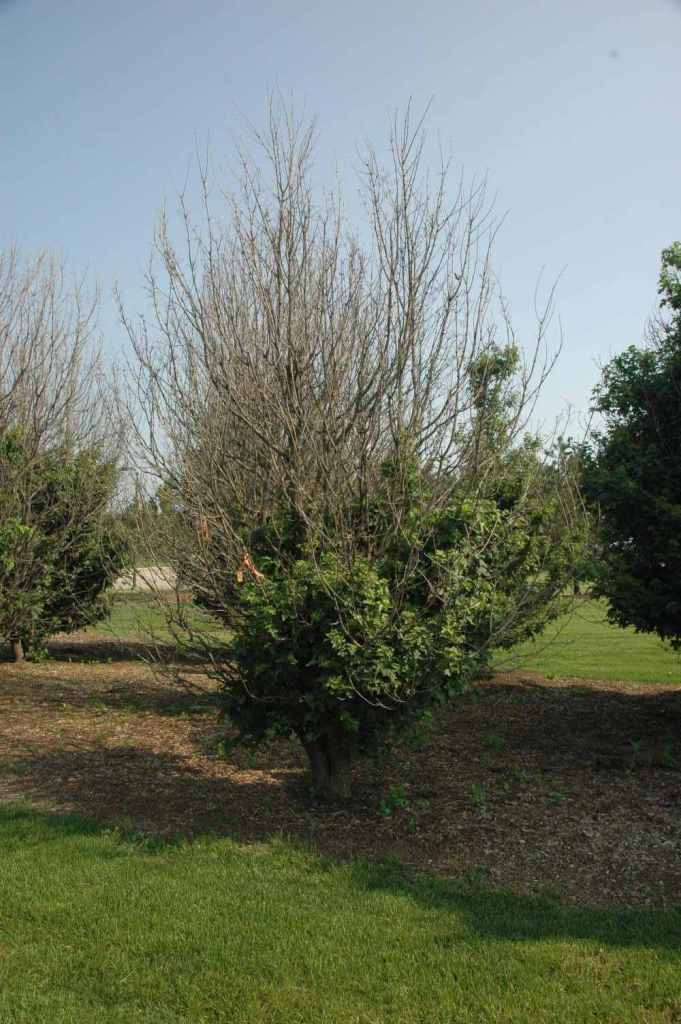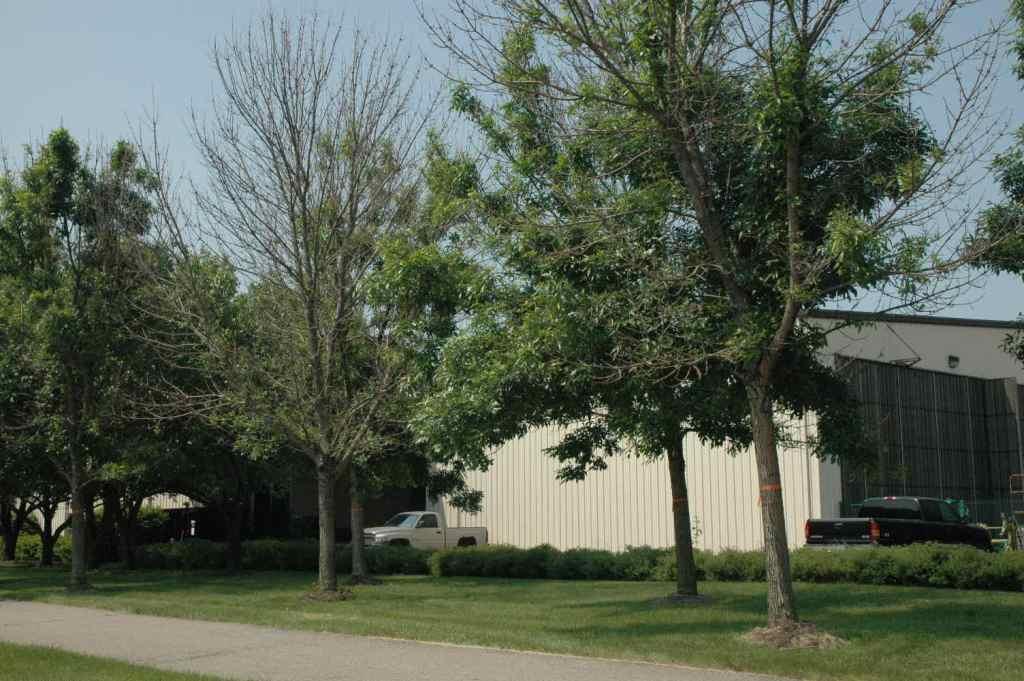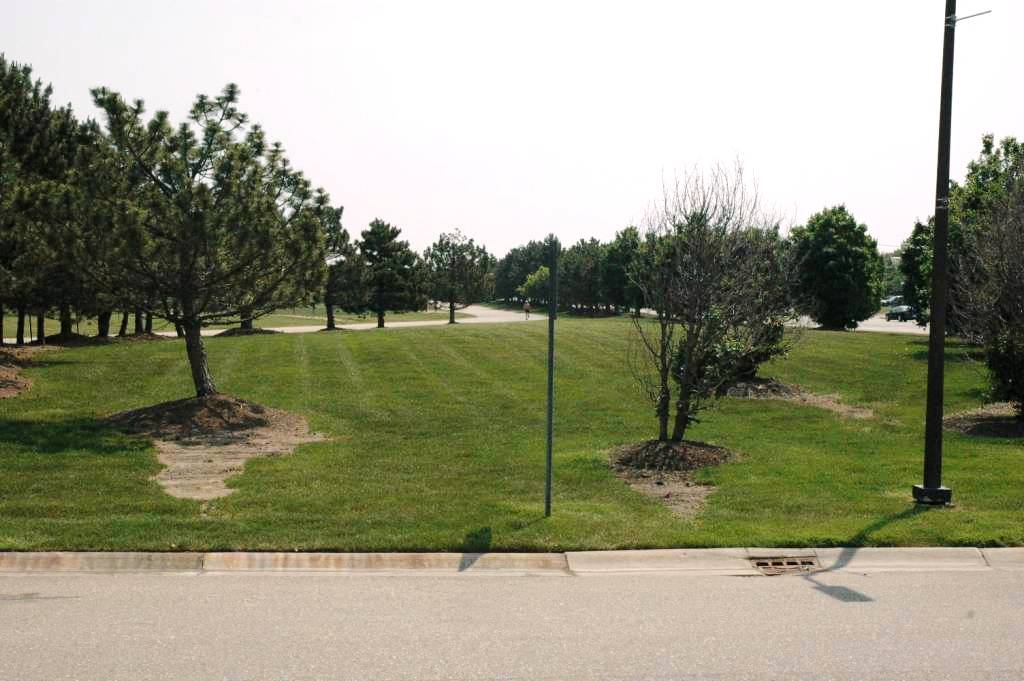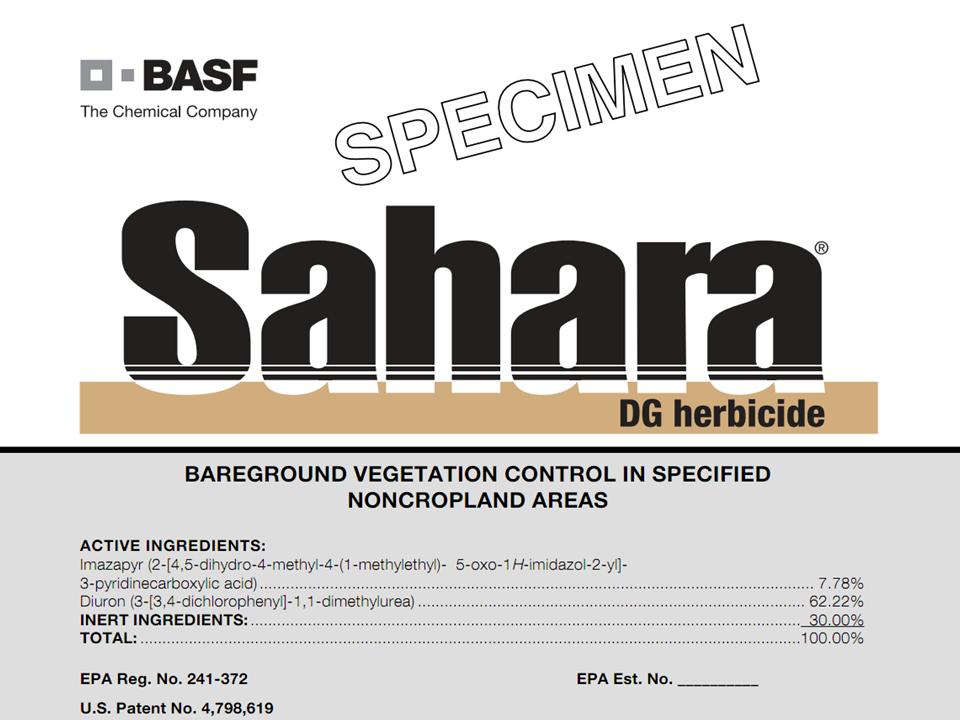Every extension specialist or educator that mentions any kind of pesticide in a talk or article always includes the disclaimer ‘Read and follow all label directions.” However that caveat ranks somewhere between “Your seat cushion may be used as a flotation device” and “Do not remove tag under penalty of law” as the most ignored phrase in the English language. While we can probably rationalize ignoring the last two (If a jetliner ditches in the middle of the Atlantic is a seat cushion really going to save you? And when was the last time you saw someone led away in handcuffs for pulling the tag off a mattress?); failing to pay attention to pesticide labels can have some real and immediate consequences.
I got called recently to inspect some tree and shrub damage at an industrial park in suburban Detroit. (Because the case potentially involves some legal issues, I won’t mention names of any parties). The industrial park included several hundred acres, much of it turf and landscape beds of trees and shrubs. The park had its own groundskeeper but contracted out its spray applications. A couple summer’s ago the staff groundskeeper complained several times to the contractor that they weren’t doing a sufficient job of keeping up with the weeds in the landscape beds. The typical vegetation management tools of choice on this site were spot applications of Round-up (glyphosate) and hand-weeding. For reasons that are not completely clear, this time the contract applicator reached for a jug of Sahara. Even if you don’t know what Sahara is; what image does the name conjure up? Parched. Barren. Lifeless. Sahara is a combination of two herbicides (Diuron and Imazapyr) designed for complete vegetation control in non-cropland areas such as parking lots and rights of way. And, unlike Round-up, Sahara provides foliar and root activity. This is a product you use when you want complete burn-down and you don’t want anything growing there for a long time.

A hedge maple 2 years after herbicide application
Unfortunately, that was not the desired result in this location. Within a week of the application, dozens of trees and shrubs all over the industrial park were either dead or wishing they were dead. The smoking gun was not too hard to find. The applicators had duly noted the herbicide application in their logbook and presence of active ingredient was confirmed in soil samples. Although the parties are still working a settlement, the bids for replacing the affected trees and shrubs are well into six figures.

The unkindest cut of all. These green ash were regularly treated with imidacloprid to protect against emerald ash borer. An herbicide ap took them out instead.

Two years after application there are still bare zones where Sahara ran off from mulch rings and landscape beds.
Of course, all of this death and destruction (and legal wrangling) could have been avoided simply by… Reading and following the label directions. The Sahara label notes in several places that contact with roots can damage trees and other plants, including this explicit statement under a heading in all bold letters, PRECAUTIONS FOR AVOIDING INJURY TO NONTARGET PLANTS: “Injury or loss or desirable trees may result if Sahara is applied on or near desirable trees or on areas where their roots extend.” Sounds pretty clear to me folks – don’t use this stuff near plants unless you want them to die.

So, next time you or someone working for you has any question about what a pesticide does: Read and follow label directions….
One of the things that made a big impression on me when I was taking the Master Gardener course was a series of pictures of the area surrounding a church parking lot.
There were streaks of dead turf and shrubs from runoff of whatever herbicide had been applied and nearly everything within a couple of dozen feet of the application area was dead. Lesson learned! In all of the public seminars I teach I make a point of repeating “Read and follow…” until the attendees are sick of hearing it. Eventually they start finishing the sentence for me. One of my last slides is of two of my young grandchildren in their veggie patch. I remind everyone that they are another reason to “Read and follow…” I hope at least a few of them remember.
So, Bert, is this yet another fine example of “low bid” winning the contract? Because of course having well-trained pesticide applicators is expensive.